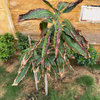Sri Lankan Weevil aka Asian Grey Weevil
alexcortez
12 years ago
Featured Answer
Sort by:Oldest
Comments (16)
TnTRobbie
12 years agomurahilin
12 years agoRelated Professionals
Baltimore Landscape Architects & Landscape Designers · Harrison Landscape Architects & Landscape Designers · La Marque Landscape Architects & Landscape Designers · Wareham Landscape Architects & Landscape Designers · Clark Landscape Contractors · Coram Landscape Contractors · Gallatin Landscape Contractors · North Canton Landscape Contractors · North Haven Landscape Contractors · Peachtree City Landscape Contractors · Saint George Landscape Contractors · Waipahu Landscape Contractors · Washington Landscape Contractors · 07920 Landscape Contractors · Palos Heights Landscape Contractorsbsbullie
12 years agomango_kush
12 years agomurahilin
12 years agoalexcortez
12 years agojeffhagen
12 years agoesco_socal
12 years agomangomandan
12 years agomurahilin
12 years agomurahilin
12 years agomangomandan
12 years agomikesid
12 years agobarbra123
7 years agognappi
7 years ago
Related Stories

HOUSEKEEPINGYour Guide to a Sparkling Clean Kitchen
Tackle food messes with this comprehensive collection of targeted and tested cleaning methods
Full StorySponsored
More Discussions







Aydelette Kelsey